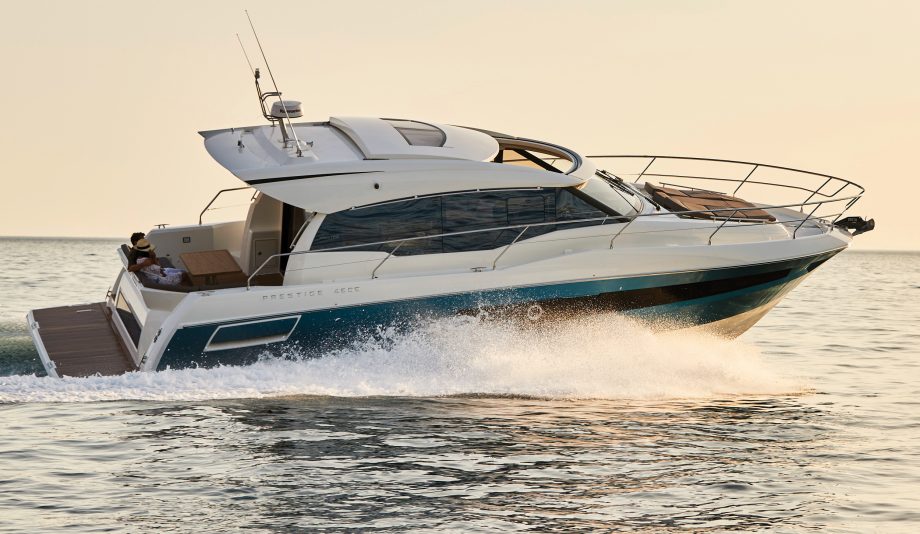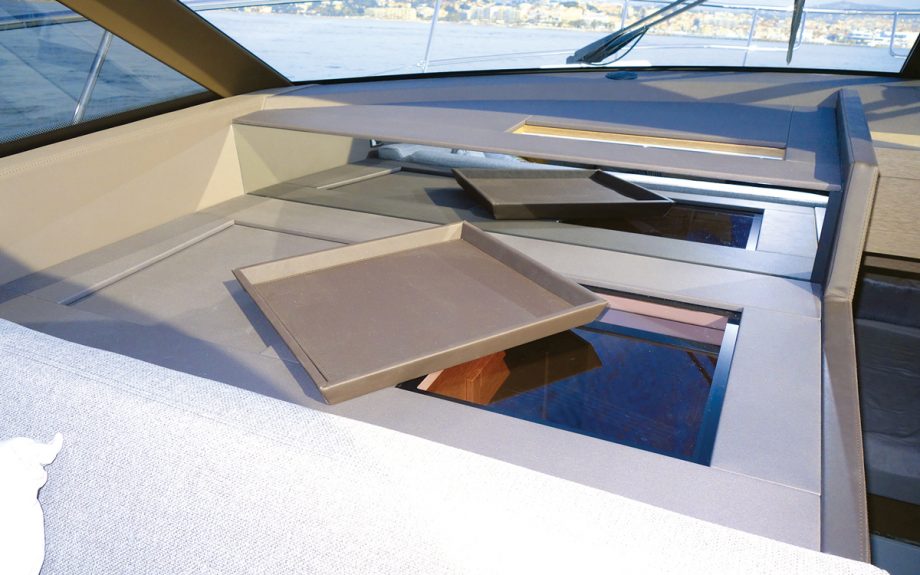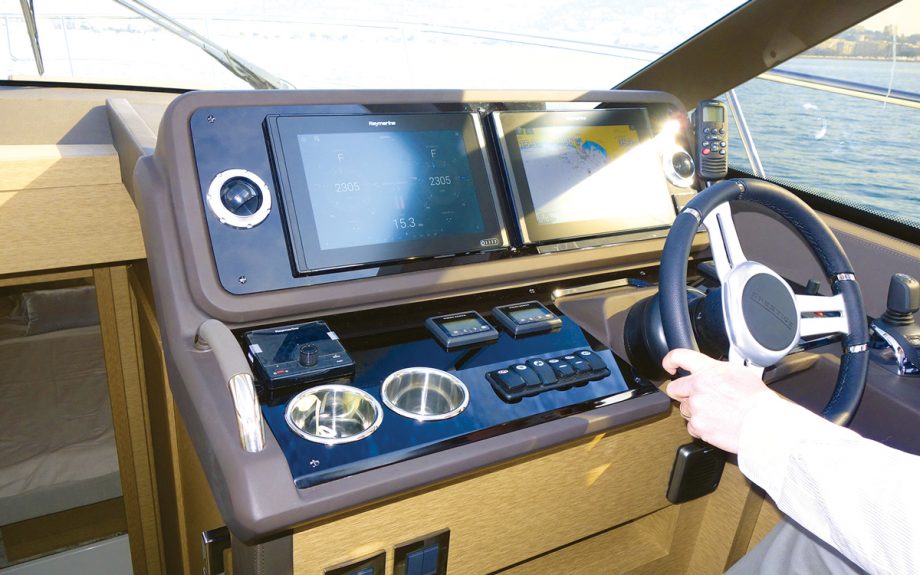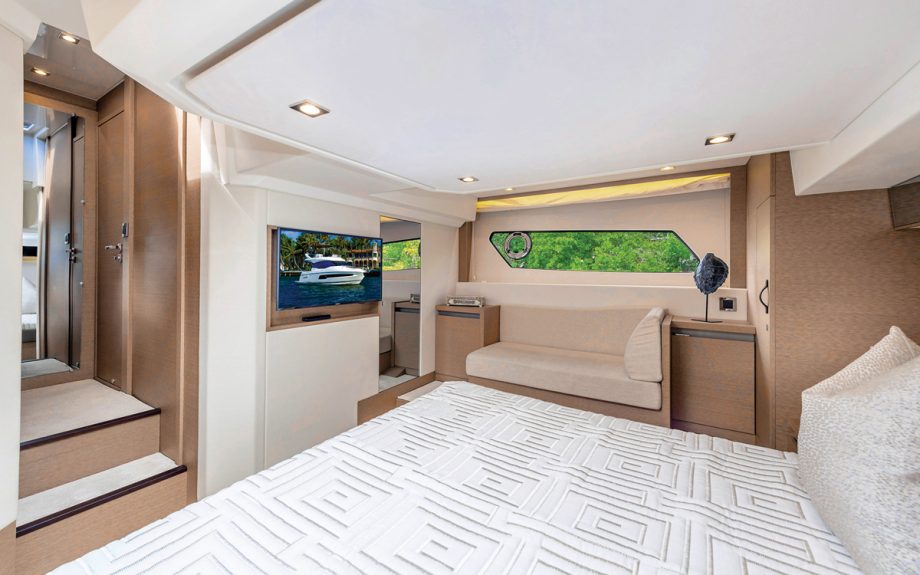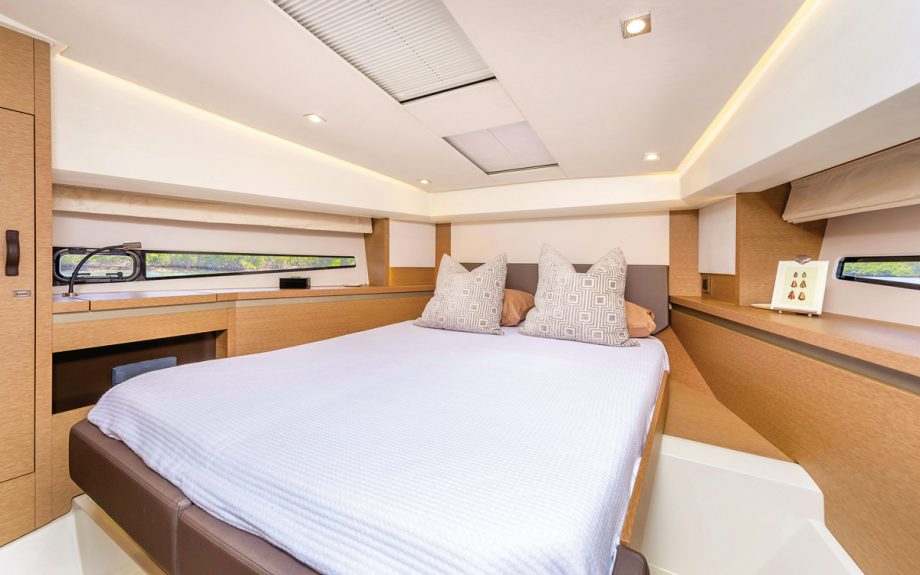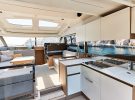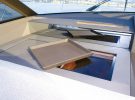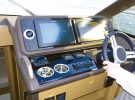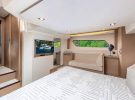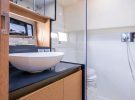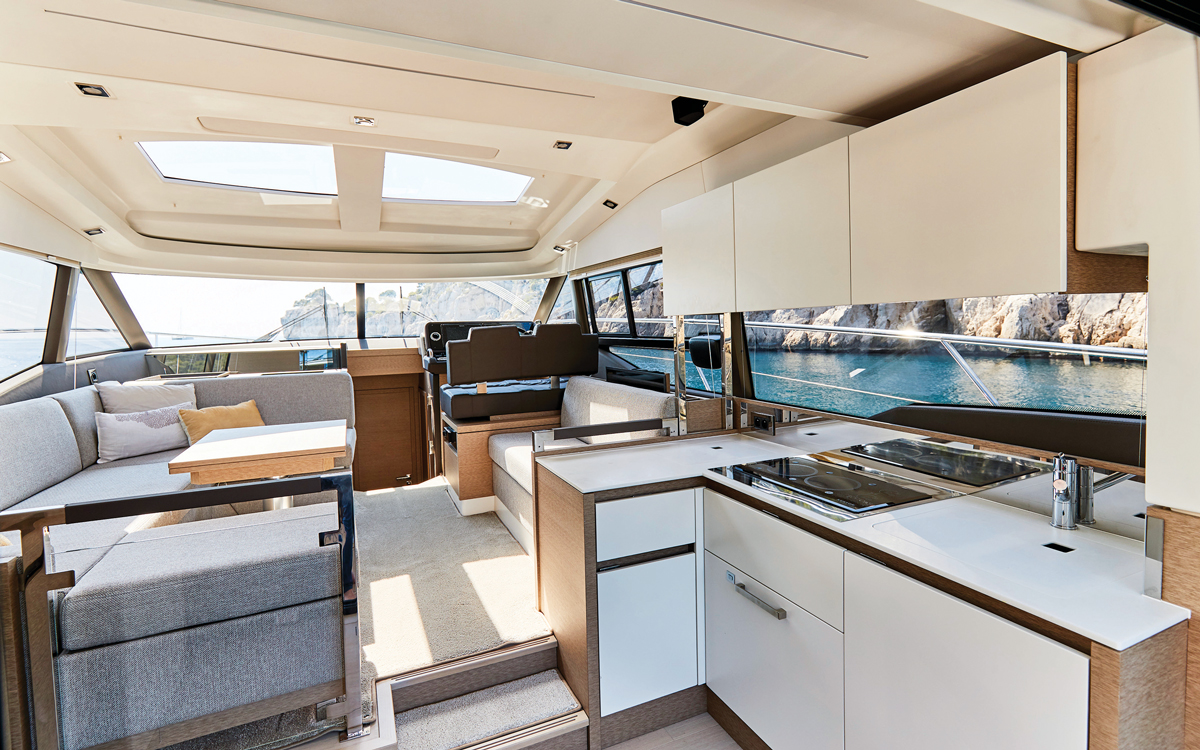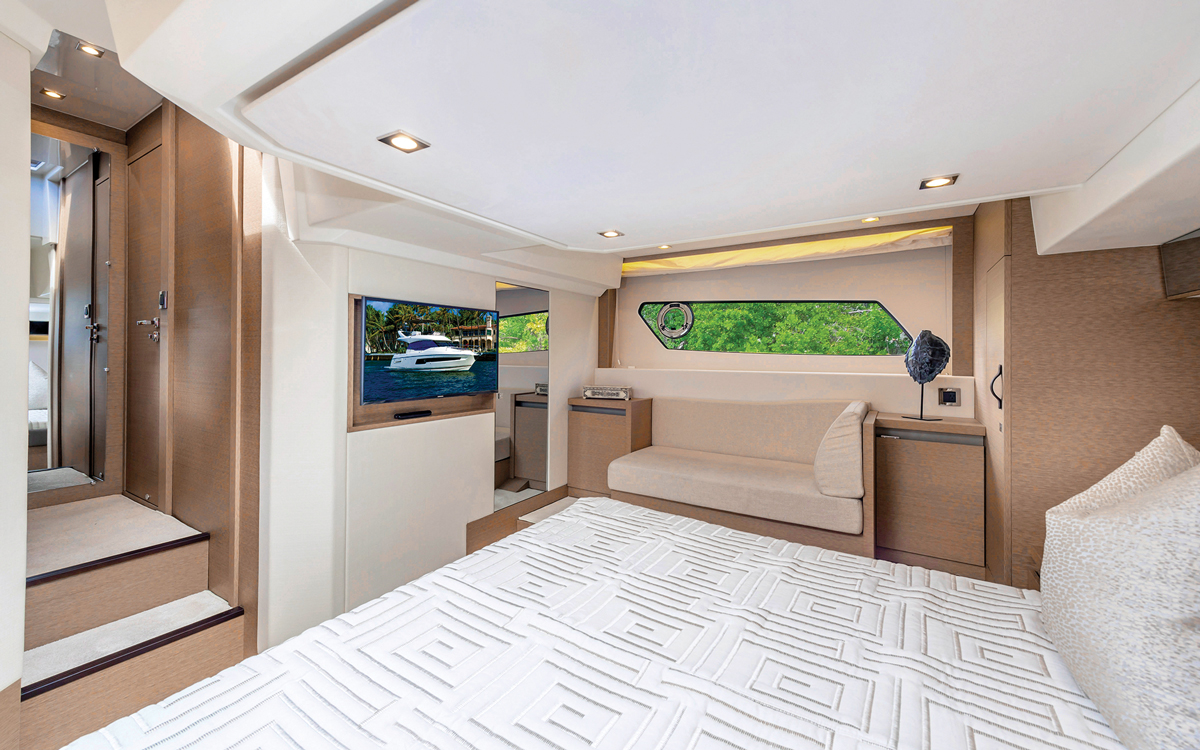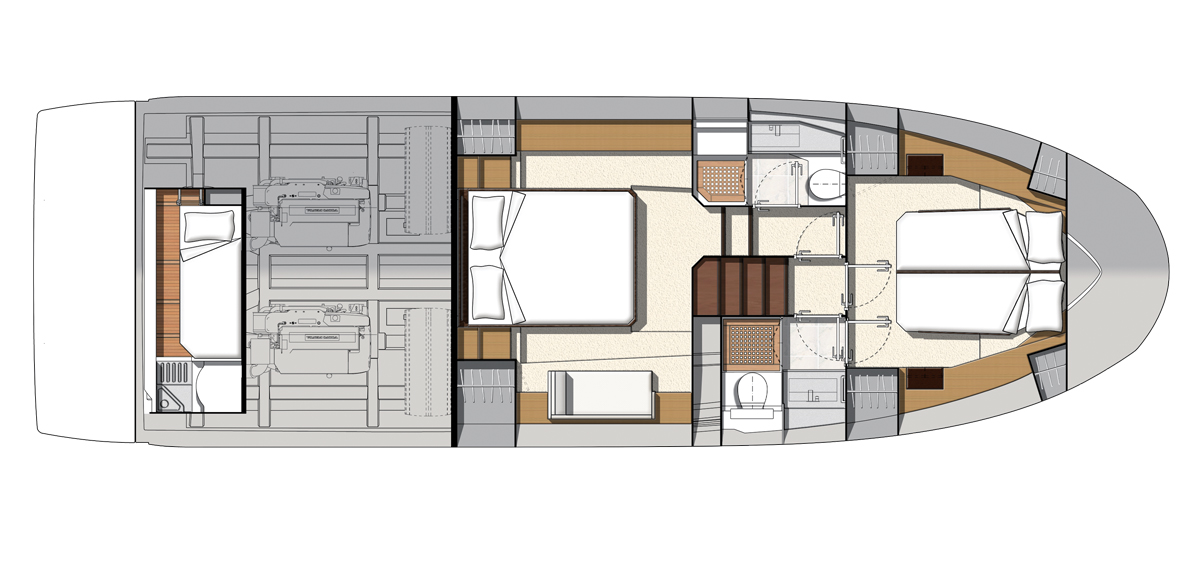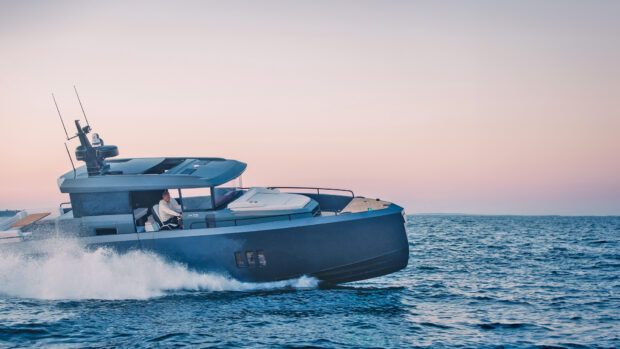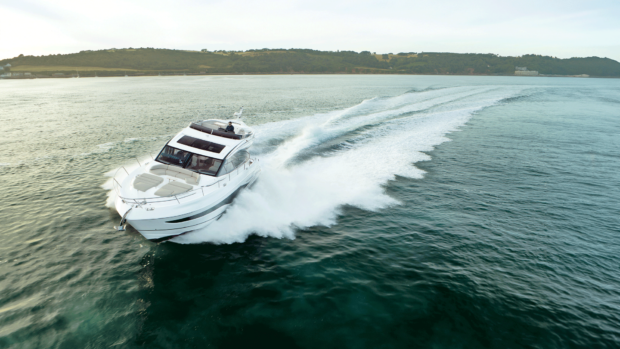Most modern coupés are simply flybridges with the top deck cut-off, but not the Prestige 460S, which was always designed to be a coupé, and it shows
“We developed the 460 flybridge and the 460S coupé together, so the design was intended to work equally well for either derivative,” explains Erik Stromberg, director of product marketing for Prestige.
He raises an important point because the rise in popularity of coupé-style boats is a fairly new trend, meaning that many recent coupés are simply flybridge versions with the top cut off. Developing the pair together means the design (which is identical from the saloon ceiling down) doesn’t favour one at the cost of the other.
The most obvious corollary of this process is the size of the cockpit. With the coupé in mind (which of course lacks the outside space of the flybridge’s upper deck), the saloon doors have been pushed forward, increasing the exterior cockpit space.
In fact it’s big enough to feature L-shaped seating, something you don’t usually find on boats below 50ft, and there is a crew cabin with a single berth and separate toilet below.
You could opt for storage instead, but most people opt for the cabin. After all, you can put deck cushions on the bed but you can’t sleep in a storage locker.
In order not to compromise the size of the saloon, the windscreen has been pushed further forward than it was on the previous Prestige 450. “Provided there is room for 2-metre sunbeds on the foredeck, you don’t really need any more length to it,” Erik points out.
Article continues below…

Fairline Targa 48 Gran Turismo
Footage of the Fairline Targa 48 Gran Turismo from the 2014 London Boat Show

VIDEO: Sealine C430 first look
There’s something deliciously naughty about a big, beamy cruiser that tops 40 knots but that's not the end of the
The main deck layout mirrors the Prestige 460 flybridge, and it’s worth taking time to appreciate it. There’s no question that the French yard has been playing catch up with the premium European brands of late but there’s equally no question that they’re gaining fast.
Crucially, all of the finish and fittings match the rest of the Prestige range – a product line that now stretches to 75ft, so it needs to be good.
Woodwork is satin-finished grey oak (the choice of 80% of clients) with moabi or wenge (again satin-finished) as options. The floor is parquet, the worktops of the fashionably aft galley are Corian and the overhead lights are slim fillets.
Bare GRP is notable by its absence and there are some neat details – my favourite is a large square tray that slots into one of two tailormade recesses in the deckhead opposite the helm.
Why two recesses for one tray? Well, one is a skylight that beams light into the mid cabin. Simply position the tray according to whether you prefer more light or more privacy.
Drop down the stairway (where there is room for a washing machine) to the lower deck and the layout is a conventional full-beam master cabin amidships with the guest cabin forward (featuring scissor berths to allow you to swap between twin beds or a double). Both are ensuite, the guest accessing the day heads.
Climate control
Twin Volvo Penta IPS is the only drive option but you can choose between IPS500 (370hp) or IPS600 (435hp). You want the latter (and 90% of buyers agree with me).
Whilst the IPS500 units will give 28 knots in perfect conditions, none of us ever boat in perfect conditions. Add a heavy dinghy, fill the boat up with clobber and add the drag of a season of growth and that 28 knots will be a memory, replaced by the reality of engines working very hard to maintain a 25 knot cruise.
The IPS600 motors are the same units that Fairline fits to its Targa 48, and the same that Princess uses in its V50. Punting a clean Prestige 460S to 30 knots is therefore easy and a 20-knot cruise effortless, even after the clobber and hull growth.
So having chosen your engines for you, the only big decision you have is whether you should opt for the coupé over the flybridge? That’s a harder one – you’re certainly not going to see much performance benefit.
The flybridge only carries a 300kg penalty according to Mr Stromberg, so it will have as little detrimental effect as adding four adults.
So what do you gain? A sleeker looking boat is the most obvious visual advantage, but don’t rule out the benefit of the large sliding roof over the lower helm, something the flybridge boat does without.
Jackshafts that push the engines (and therefore the centre of gravity) forward mean that sight lines remain superb from that lower helm, with little bow rise onto the plane and an easy view out ahead and to the sides as the boat lopes along at a steady 25 knot canter.
At the helm on a crisp clear spring day in the south of France – the roof retracted but the tall screens and remaining roof providing shelter from the chill – feels like a great place to be.
Add powerful air conditioning and you’ll reap the same rewards when it’s scorching hot outside. Climate control – that’s the real benefit of the coupé.
First published in the October 2018 edition of Motor Boat & Yachting.
Price as reviewed:
£490,526.00 inc VAT
Details
Price as tested: £661,054 (inc VAT)
LOA: 46ft 10in (14.29m)
Beam: 13ft 11in (4.25m)
Engines: Volvo Penta IPS500/IPS600
Top speed on test: 30 knots
Fuel consumption at 20 knots: 115 lph



